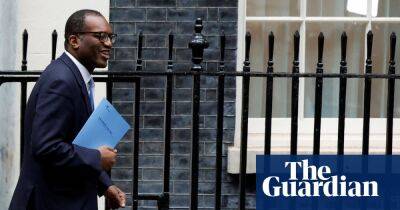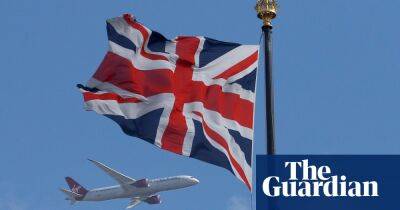UK government bonds: why are yields rising and why does it matter?
Kwasi Kwarteng’s tax-cutting mini-budget triggered a collapse in the pound and surge in the UK’s borrowing costs.
Sterling fell at one point on Monday to its lowest level against the dollar in history. According to Deutsche Bank, the UK’s borrowing costs for 10-year government bonds have risen by the most in a five-day period since 1976 – the year Britain went cap in hand to the IMF for a bailout.
A bond is a loan that investors make to a bond issuer. Governments, companies and other organisations issue them when they need to raise money. The bond market is the biggest securities market in the world, worth more than $100tn (£93tn). UK government bonds are also commonly referred to as gilts.
Bond yields represent the amount of money an investor receives for owning the debt as a percentage of its current price. When the price of a bond falls, yields rise. The yield is also commonly referred to as an interest rate, or the “cost of borrowing” to an issuer.
Rising bond yields suggest a lack of willingness among investors to own the debt, as buyers demanding a lower price to buy them.
Britain’s borrowing costs have soared as investors turn sour on the prospects for the economy and public finances. Yields on 10-year bonds have risen above 4%, the highest since the 2008 financial crisis, and more than triple the 1.3% rate at the start of the year.
Bond yields have risen across advanced economies this year as high inflation, exacerbated by Russia’s war in Ukraine, hits global growth.
However, the UK has suffered a more punishing sell-off, drawing comparisons to an emerging market economy such as Mexico rather than the world’s fifth largest. There are three key reasons.
First, Kwarteng’s mini-budget is viewed as the main trigger for the
Read more on theguardian.com


















